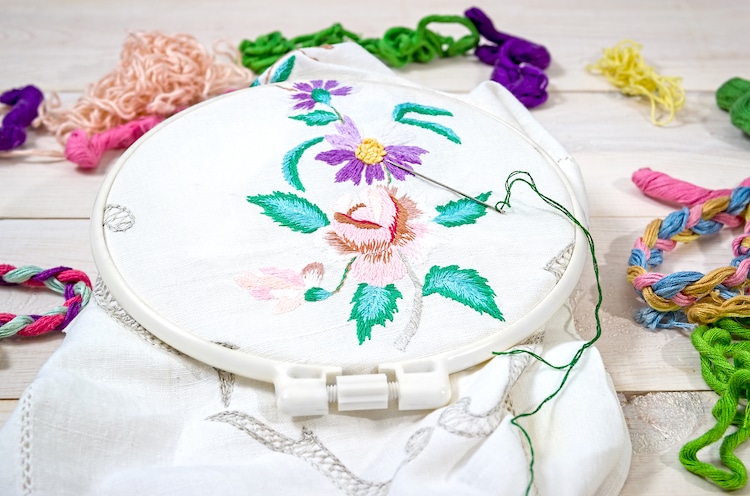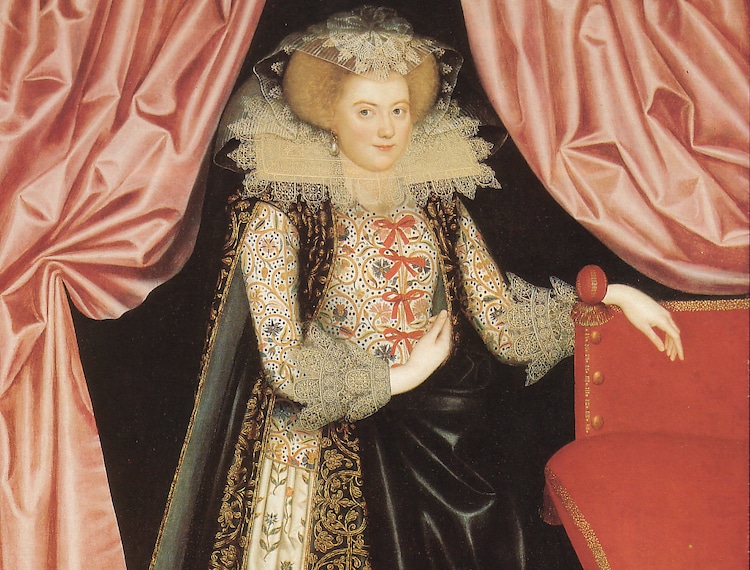
Photo: Embroidery flowers by Mr_Mrs_Marcha / Shutterstock.com
The possibilities of embroidery are seemingly endless. But among all of the things that are fit to stitch, flowers remain an ever-popular subject. They have taken on different styles throughout the centuries, but their legacy endures.
Flowers have a long place in art history; one of their best-known forms is in decorative motifs. Jacobean embroidery, a style popular during the reign of King James I of England in the 17th century, was lauded for its “fanciful plants” that adorned curtains and bedding. Because embroidery has had this reputation, it comes as no surprise that the beauty of blooms have found a place on things we use every day.

Lady Dorothy Cary wearing a Jacobean embroidered linen jacket (detail)
Artist: William Larkin [Public domain or Public domain]
So, what does it mean for contemporary flower embroidery? The practice has, in many ways, stayed the same. People are using identical stitches and techniques that were practiced hundreds of years ago. Flowers are still a popular subject for embroidered home decor and clothing. But as embroidery continues to enjoy a renaissance, artists are putting their own spin on the tradition.
One of the most notable ways in which contemporary stitchers are modernizing flower embroidery is by mixing techniques and subject matter. Within the scope of a single hoop, you might find blooms that are sculptural—coming up from the fabric—alongside florals that have a stylized appearance. Flowers are often paired with text or paint and stitched in unexpected places that make the ancient craft feel new.
How to Embroider Flowers
There are many ways to embroider flowers. Some crafters sew the blooms onto the fabric using the stitches like strokes of paint. Other embroidery artists use three-dimensional approaches to produce petals, and leaves of flowers rise from their surface—making the pieces very tactile.
If you’re new to embroidery, have no fear. Many people who are avid stitchers are self-taught, and there are great resources online that demonstrate the techniques you need to know and the supplies you should use.
Want to understand the non-floral stitches first? Check out our guide for the most popular hand embroidery stitches you can learn on YouTube (for free).
Next: How to stitch 3D and 2D flowers onto fabric.
